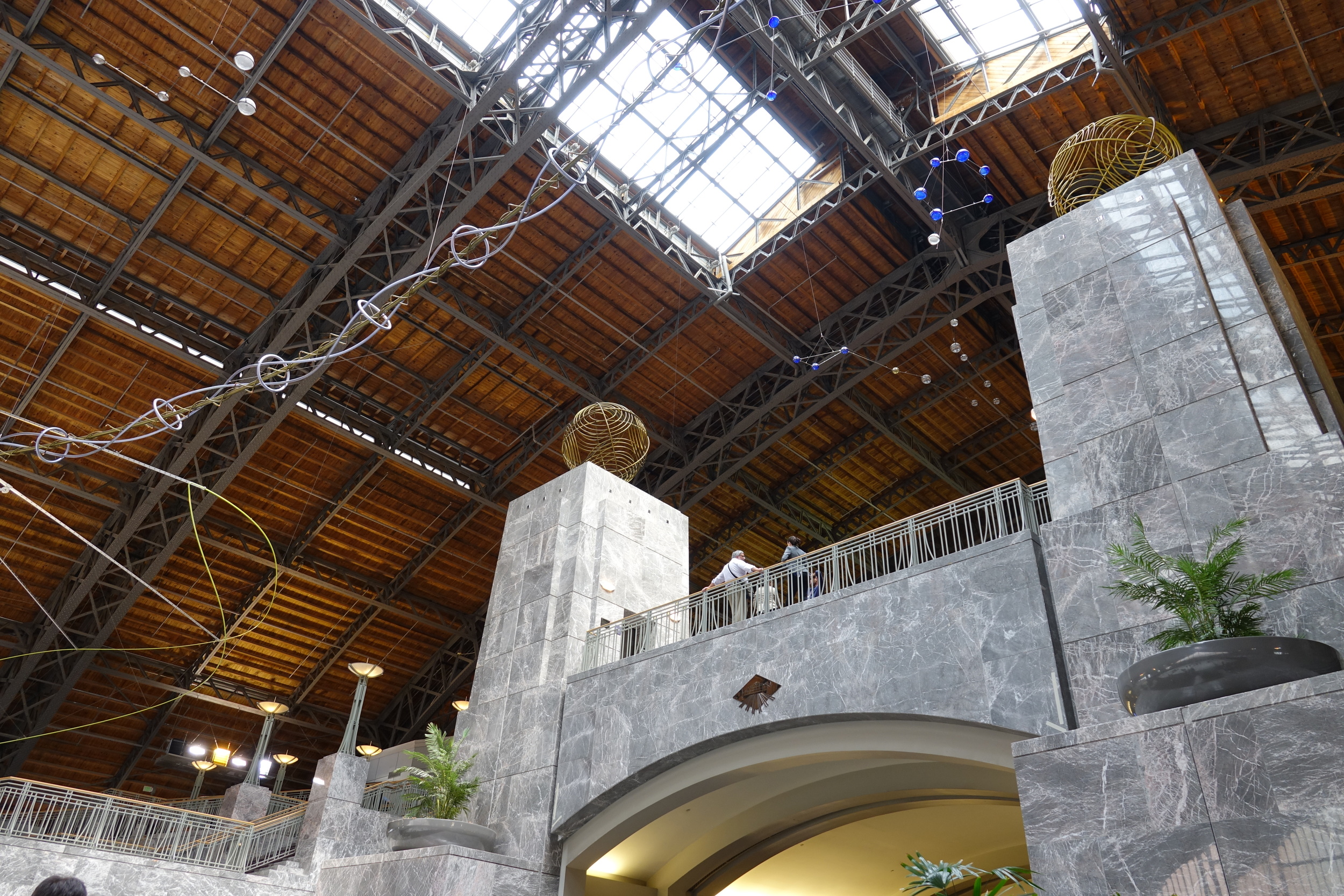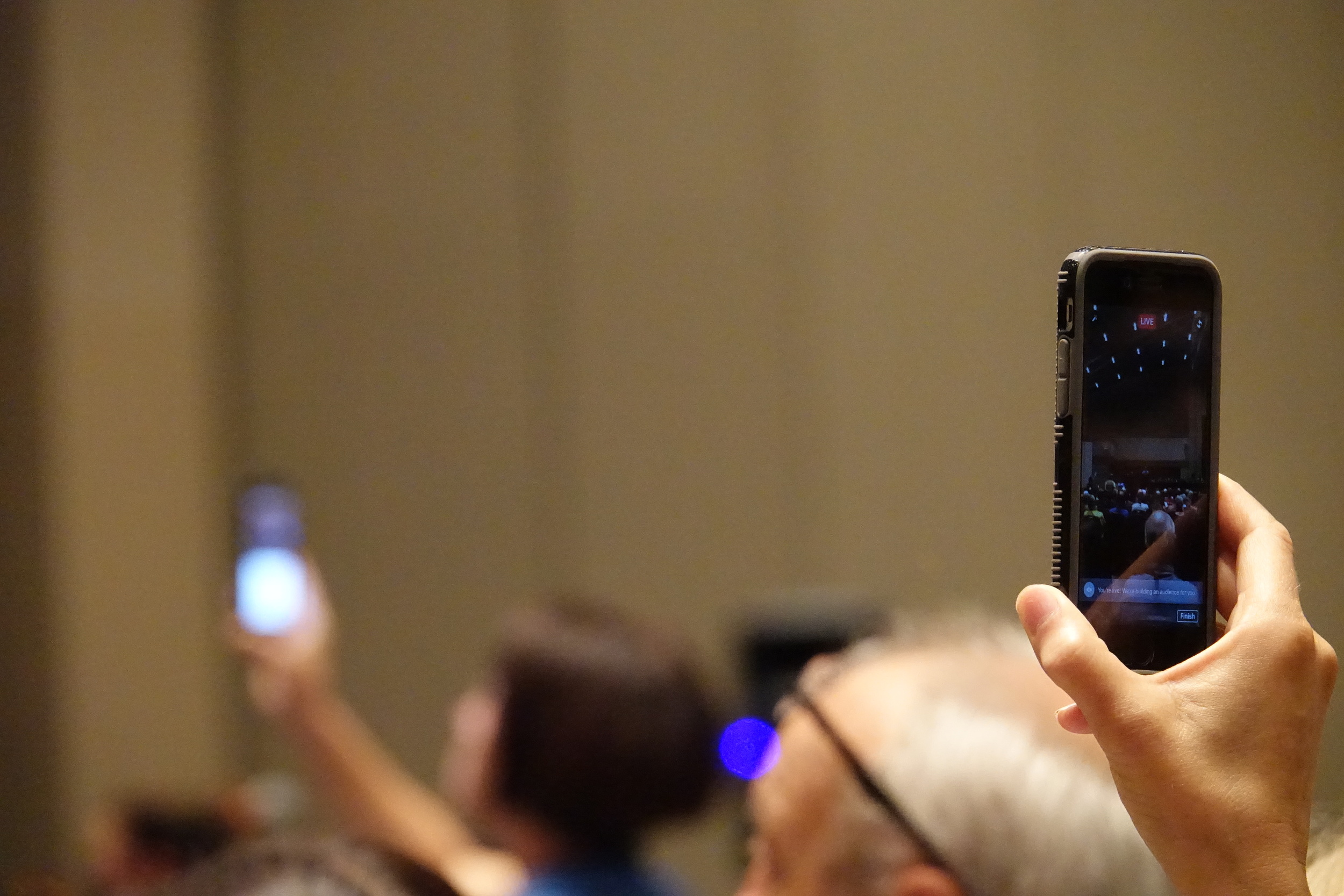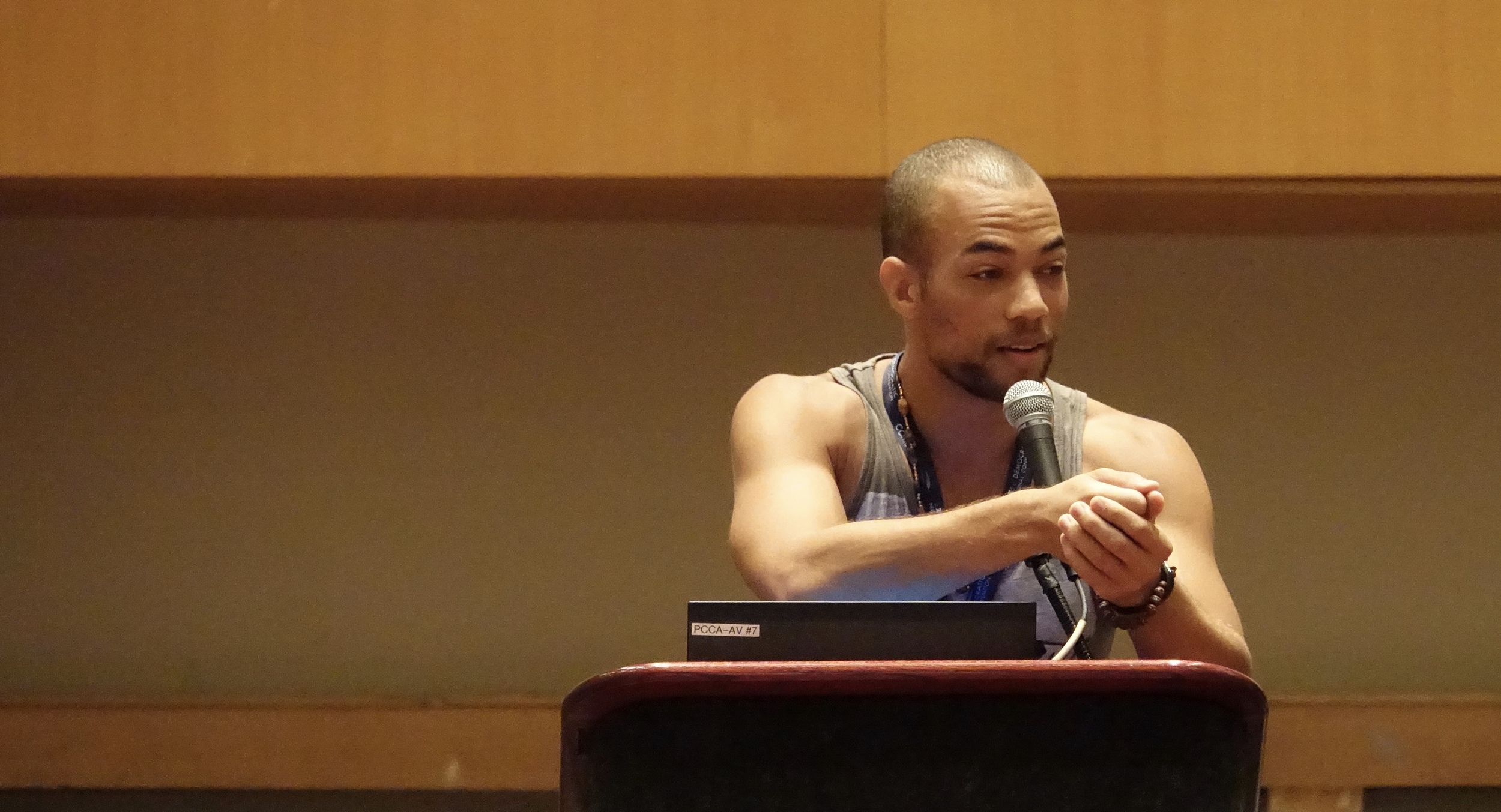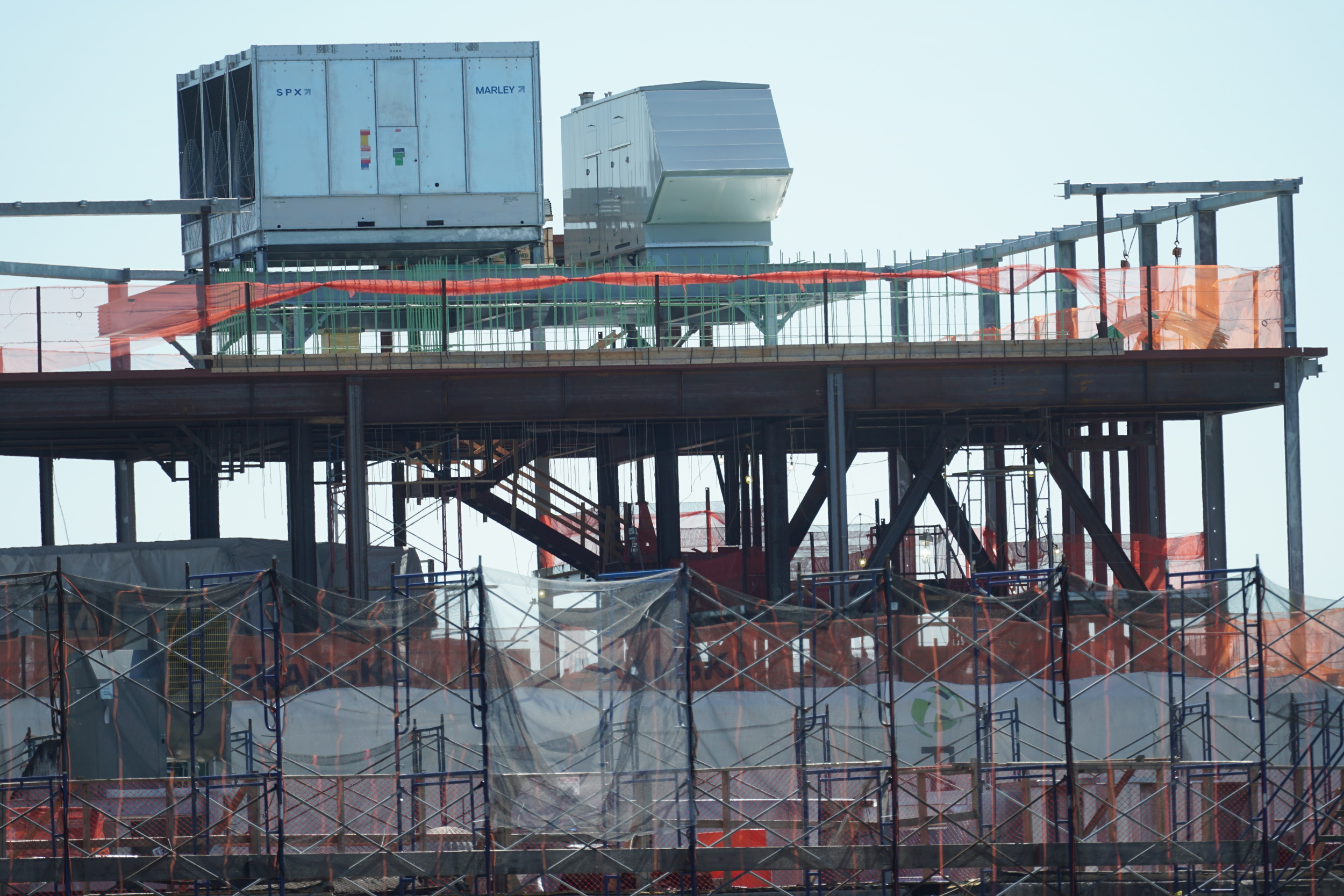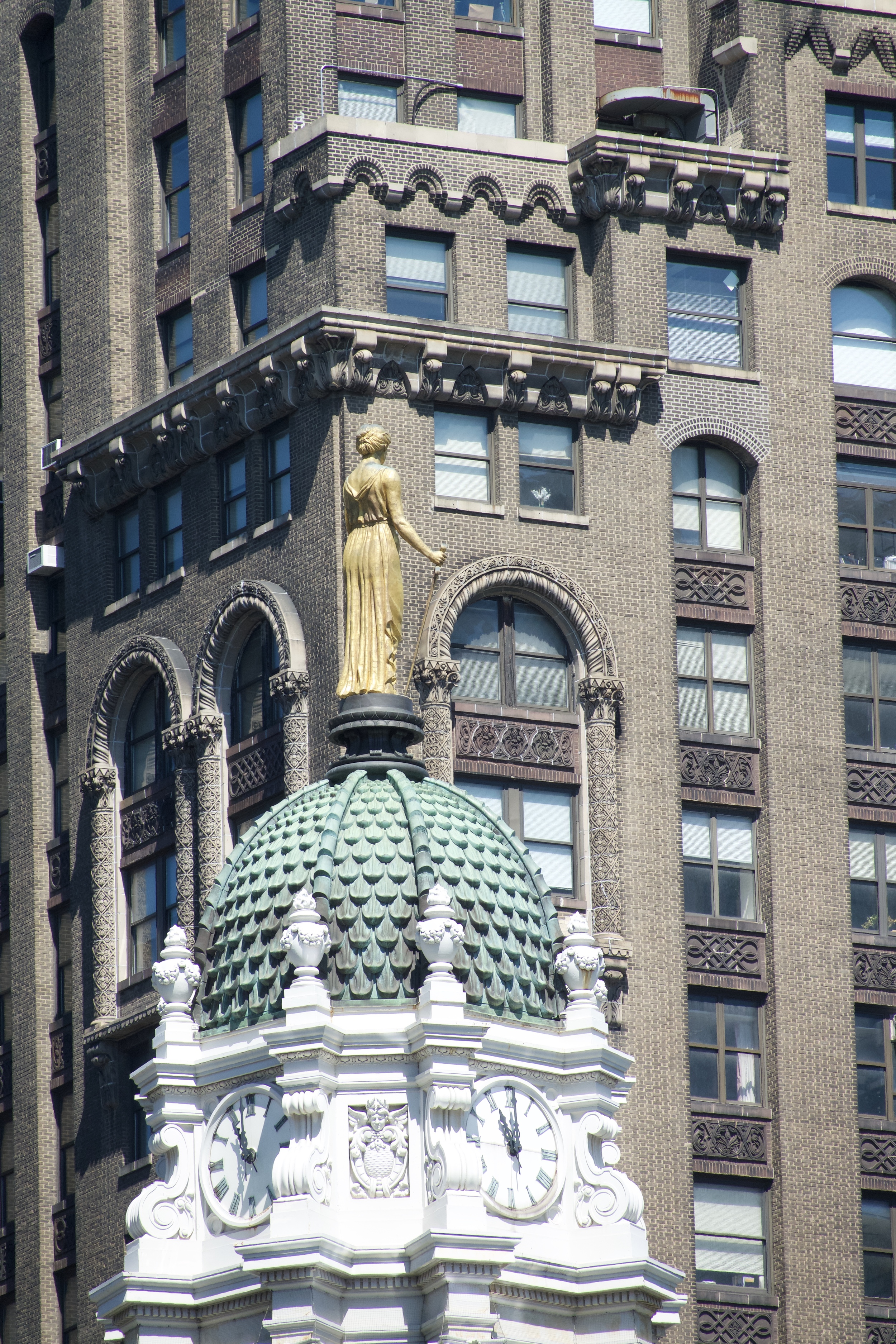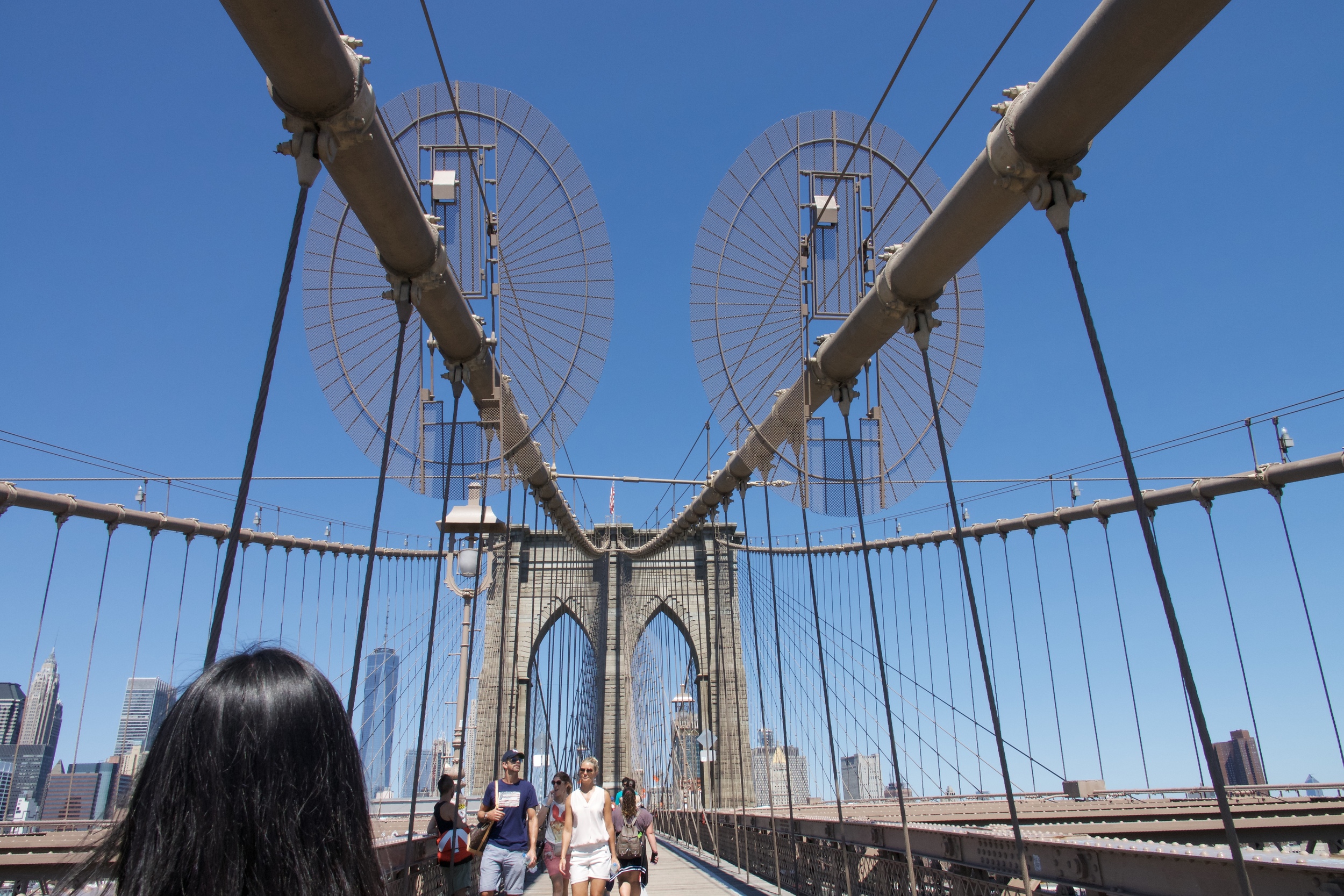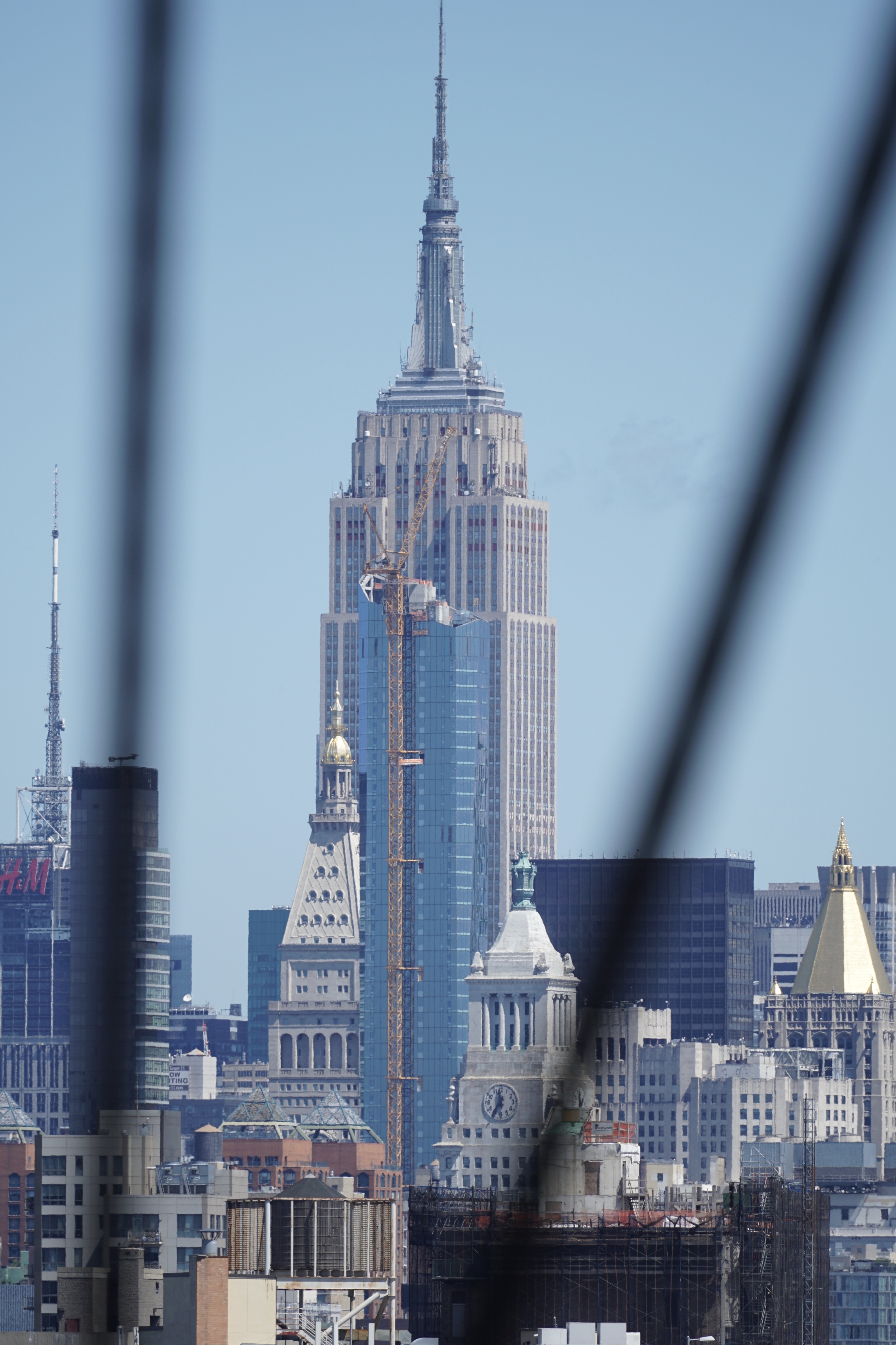It was one of those once-in-a-lifetime opportunities, but this time (unlike in April) I wasn’t official press. Forget about a tripod or monopod - Secret Service rules prohibited even selfie-sticks. Forget about a lot of glass, especially long, fast glass: not only would everything have to be hand-held, but those same rules stipulated no backpacks and no bags bigger than 18” x 13” x 7.” And then there were the closed-door meetings where even if I had been press, no press were allowed. Traveling small, light and unobtrusive were the orders of the week. Heads-up: this is a post about gear -- not politics -- but if you don’t want to see photographs from the Democratic National Convention in Philly (along with protests) you’d better stop reading here.
Background
Back in April I was official press at a presidential rally in Pennsylvania where Sony’s FS5 with E PZ 18-105mm f/4-5.6, a Sony a6300 with Zeiss Touit 12mm f/2.8, a TASCAM DR70-D field recorder, and a Benro monopod were the order of the day. They were great. The resulting video was viewed more than 90,000 times.
But this time, just three months later, I was a guest at the Democratic National Convention (I’ll spare you the details because I really don’t want this to be about politics). The objectives and rules were very different:
- I would be severely constrained by Secret Service rules (no tripods, monopods, selfie-sticks, backpacks, or bags larger than 18” x 13” x 7”) and would therefore have to travel light, small and unobtrusive;
- even if I weren’t constrained, I’d still want to travel light, small and unobtrusive because these were going to be long days (though I would have brought a monopod if I’d had the option);
- it was to be the first time I’d try live streaming, part of an unofficial team covering the event using Periscope on an iPhone; and
- it would be a perfect opportunity to stress test a long zoom (Sony’s new FE 70-300mm f/4.5-5.6 G OSS [B&H|Amazon]), a wide rectilinear prime (Zeiss’ new Batis 18mm f/2.8 [B&H|Amazon]), and a fast standard prime (Sony’s new FE 50mm f/1.8 [B&H|Amazon]).
Those Secret Service rules weren’t that different from the rules many of us impose on ourselves when traveling, but I decided to give up my field recorder, too.
Saturday: Pre-Convention Protests (Photographs and Live Streaming Interviews)
With temperatures soaring into the high 90s and a heat index promising to be over 100°, “traveling light” took on new meaning.
It starts with clothing.
Baggy, tropical weight cargo pants with multiple pockets, a technical wicking T-shirt, summer hiking boots, and a baseball cap were it for outer garments. I’d thought about a photographer’s vest, maybe even a belt with smaller bags like LowePro’s S&F system, but I just didn’t want the weight or compromised air flow.
The second thing you do is get merciless with the gear, even if I already knew what I wanted to bring.
Main Cameras
There was never any doubt that the Sony a6300 was going to be my main camera. Even though I still had the FS5 on loan (RAW review coming soon, I promise!), there was no way I wanted to carry that weight all day long without support; I didn’t need the things that had made it so compelling in April; but I did need a couple of things it didn’t have.
Sony a6300 with Sony FE 70-300mm f/4.5 G OSS. The lens lock (center bottom) is a nice touch; slip it into place, and the lens went extend.
- I didn’t need the XLR inputs, because I decided early on that any audio I captured was going to be through the iPhone, either as a camera with built-in audio or as a field recorder which I’d synch later in post.
- I didn’t need the big battery: I could carry smaller batteries in my pocket, so I wouldn’t have that weight in my hands, and I was never going to record for long stretches.
- I didn’t need the LCD panel or the articulating viewfinder, because the a6300’s would be fine for the kind of shooting I’d be doing.
- Since I didn’t need long, uninterrupted video, I didn’t worry about overheating.
- Given the subject matter, its intended audience and the distribution channel (web, with probably half or more views occurring on mobile devices), I didn’t need 10-bit 4:2:2 HD nor the XAVC-L codec.
On the flip side, I wanted the better sensor, smaller size, lighter weight, and less obtrusiveness of the a6300.
I thought about an a7r II or a7s II, but I don’t own them. I’ve worked with both and they’re incredible cameras, but I didn’t think I’d be giving up much in this particular scenario. I wouldn’t need the extra megapixels of the a7r II, and I wouldn’t need the extra low-light performance of the a7s II (more on this later).
The FS5 did have one big plus which I willingly gave up: wireless streaming. This was an easy call because I was trying streaming for the first time and wanted to go (say it with me now) small, light and unobtrusive.
Which is why I opted to stream on my 128 GB iPhone 6s+ (which just happens to have a Sony sensor as well).
Audio
Sure, you can get better sound with vastly more expensive gear, or even just modestly more expensive gear (I love the TASCAM DR70-D with XLR adapter for these lavs). But I continue to be amazed at just how good the sound can be when you use a wired lav with deadcat on a smartphone, and I was being ruthless about size and weight.
My audio consisted of the following (besides the iPhone itself):
Can't get much more compact than this for audio! See details below (all sitting on top of a Domke F-5XB shoulder/belt bag).
- Aputure A-lav EZ for smartphones with deadcat (it has a nice long cable for interviewees) ;
- RØDE smartLav+ with deadcat (the cable is much shorter, perfect for the interviewer with the iPhone in hand);
- RØDE SC6 Dual TRRS Input Adapter (so that I could record two mics simultaneously and just maybe monitor audio with the included headphone jack);
- RØDE SC3 3.5mm TRRS to TRS Adapter (in case I wanted to record to the a6300 directly);
- FosPower Ultra-Slim Design 3.5mm (1/8") Male to 3.5mm (1/8") Female 4-Conductor TRRS AUX Stereo Audio Headphone Jack Extender Adapter (so that the adapters would work with the Schneider iPro case I use with the iPhone); and
- FosPower (4 Inch) 3.5mm Male to 3.5mm Female Auxiliary 4-Conductor TRRS Stereo Audio Extension Cable (same reason as the Jack Extender)
Lenses
Another view, clockwise, from 1:00PM: Sony FE 70-300mm f/4.5-5.6 G OSS (loaner), Sony FE 50mm f/1.8 OSS (loaner), Sony E 50mm f/1.8 OSS, Zeiss Touit 12mm f/2.8, Zeiss Batis 18mm f/2.8 (loaner), and in the center Sony FE 90mm f/2.8 Macro G OSS. The primary hole in the Sony E-mount lens ecosystem at this point are big, fast, native mount prime telephotos or something like the Leica Vario-Elmar 100-400mm f/4-6.3 [B&H|Amazon].
Sony was great, working with LensRentals.com to get the new FE 70-300mm f/4-5.6 and FE 50mm f/1.8 nifty fifty to me just before the convention started. Each came with their own f-stop lens bag (very nice, by the way), but I ditched the bags immediately. I had another idea.
Sony's new FE 50mm f/1.8 has full frame coverage but at $248 is $50 cheaper than one of my personal favorites, its APS-C crop sensor older, slimmer brother the E 50mm f/1.8 OSS. Image quality was very good, but it felt like a step back from the little E from an operational and ergonomic perspective: the E was quieter, faster, and felt a bit more solid. In fact, the new FE reminded me more of my old Canon EF 50mm f/1.8 II. The 70-300, I'll tell you right now, is a GREAT lens. The finish is a little different from the 90mm f/2.8 macro, but other than that they are comparably built.
Zeiss was also terrific, getting their Batis 18mm f/2.8 to me just in time.
The full-frame Batis 18mm f/2.8 on an a7r II has the same field of view as its little brother Touit 12mm f/2.8 on the a6300. Other than the OLED display and without them being next to each other, it would be tough to tell them apart at first glance.
Both lenses are also surprisingly light. Autofocus is quick and quiet.
I already had the Schneider iPro Trio for the iPhone (Macro, 2X, and Super-Wide), so I picked up the S2 Wide which suffers less from distortion than the Super-Wide.
Bags & Accessories
I was determined to fit everything I needed into my little Domke F-5XB [B&H|Amazon] , a small shoulder bag with can actually double as a belt bag. At 10.5” x 6.5” x 4.5” and weighing 1.37 pounds, it’s the smallest bag I have and is comfortably inside the Secret Service limit. But this also required that I leave something home, and on Day 1 I opted to leave the 50mm f/1.8 behind.
While the a6300 with 70-300 fit perfectly in the Domke, there wasn’t enough room to fit the Batis 18mm f/2.8 next to it. I decided the answer was to attach a Peak Design CapturePro Camera Clip [B&H|Amazon] to the shoulder strap and task the interior of the Domke to hold just one lens at a time. The camera would always be in my hand or on the strap, while the Domke would then have room for extra Sony batteries and SD card, the two lavs and adapters, the Schneider iPro lens set – and an Anker PowerCore charger and cable for the iPhone.
Domke F-5XB is a very small, unassuming and very comfortable shoulder/belt bag, but it requires compromises when packing. Inside: Sony a6300 with Sony FE 70-300mm f/4.5-5.6; outside, Zeiss Batis 18mm f/2.8
The MicroPlate is smaller than the regular plate, making it easier to use Sony's tilting rear LCD panel. Unlike the regular plate, however, it only orients one way (notice it's wider than longer).
Apps
This is the first review I’ve ever done where I treat apps the same way I treat accessories or lenses, but it IS the second half of 2016.
The Periscope live streaming app (now owned by Twitter) and the RØDE Rec audio recording app were both already installed on my iPhone. There are other apps out there, but these two were the shortest path -- for me -- to achieve my objectives.
Periscope is not much more difficult than twitter -- no setup involved -- making it an easier choice for me than the other app I contemplated, Wirecast Go.
I've used RØDE Rec since I bought my first smartLav. It works well. Zoom, among others, makes a similar app.
Finally kitted out and ready to go, I made my way into Philly.
Saturday's Results
The 70-300mm f/4.5-5.6 mounted to the a6300 was just about perfect. Not much longer (though noticeably wider) than Sony’s own 90mm f/2.8 G OSS Macro, the combo handled beautifully and delivered sharp, contrasty images. The image stabilization worked well, and with the crop sensor on the a6300 I used it as a hand-held 450mm lens -- fantastic for isolating detail.
Shooting outdoors played to the lens’ strengths (image quality and the ability to compose quickly without having to walk it in) while minimizing its primary weakness: a maximum aperture of f/4.5 at the low end and f/5.6 as you zoom in.
More on that later.
It was so good, in fact – and the shooting scenario so perfect for it – that I only took out the Batis for the first time when Occupy DNC moved inside the Arch Street Meeting House for its “People’s Convention.”
The Batis 18mm f/2.8 is surprisingly light. It doesn’t feel anything like a Milvus or Loxia, but instead is very similar to the Touit. In fact, if you think of it as a full frame version of a Touit with an OLED display for distance and depth of field, I think you’re pretty spot-on.
Which only makes sense, since these are both e-mount autofocus lenses while the Loxia and Milvus are neither.
The a6300/Batis 18/2.8 was a killer combo, light weight and quick-handling, with beautiful image quality.
I'm trying two different gallery styles below. Which do you like better?
The rectilinear 18mm focal length (the full-frame equivalent of 27mm on the a6300) and f/2.8 maximum aperture allowed me to isolate subjects of interest within the wider context of the frame, even if it offered a depth of field full frame equivalent of f/4 or so. Images were crisp, rich and smooth.
The Meeting House was mostly lit by natural light, and stopping down to f/6.3 at 1/40th called for an ISO of 6400. If you pixel-peep you can see the lens out-performing the sensor, which is pretty darned interesting though not particularly meaningful unless you enlarge the image greatly. Viewed full screen on my 27” Thunderbolt display, the image is deliciously crisp – though the noise is clear and limiting.
You can see this even more clearly when I shot at 30th Street Station: again, the lens outshoots the camera. If I’d had a tripod and been able to shoot at a much slower shutter speed, GAWD.
The Batis is not image-stabilized (most wide angles are not, I think), but I wished it were -- or that I'd had the a7r II with me because of its in-body-image-stabilization. I wrote earlier in this piece that I didn't think I'd need the a7r II's extra mega-pixels. I was right about that, wrong about the bigger picture.
Well, "need" is a strong word; "want" is probably right.
30th Street Station, Philadelphia. Sony a6300 with Zeiss Batis 18mm f/2.8: ISO 6400, f/7.1 1/1000th. No perspective correction, but obviously I converted to B&W, where I find the noise less objectionable.
I took a few more shots upstairs on the platform with the 70-300. I loved the IQ and reach; the image stabilization worked very well.
From a platform at 30th Street Station: Sony a6300 with Sony FE 70-300mm f/4.5-5.6 G OSS at 70mm, ISO 125, f/11, 1/400; cropped
Also from a platform at 30th Street Station, same gear and settings: Sony a6300 with Sony FE 70-300mm f/4.5-5.6 G OSS at 70mm, ISO 125, f/11, 1/400; cropped
I found myself wondering three things:
- how much bigger and more expensive would a faster Batis - say 1.4 -- be (24mm is my favorite full frame wide angle focal length, and I just love the shallower depth of field and speed a 1.4 lens provides);
- how much is image quality degraded when you add image stabilization (as I wrote above, many wide-angle primes forego IS, and in a recent interview with Hasselblad’s Paul Claesson he said that Hasselblad’s new lens line for their X1D is not image-stabilized because of image quality degradation; and
- beyond IBIS, what would an a7R II's megapixel count have contributed when shooting indoors?
And then there was the iPhone.
The iPhone was an easy way to stream, and given the subject matter and the real-time nature of streaming, the poor image quality due to compression and the vagaries of cell coverage wasn’t a big deal (you'll have to click on the link above because I can't seem to embed it in the post).
If the audio had been poor, however, it would have been unwatchable. Good thing that the little Aputure a-Lav EZ with deadcat was terrific.
On the other hand, with good light and both subject matter and material that match it, the iPhone 6s+ is no slouch for stills and video on its own.
Apple iPhone 6s+ ISO 40, f/2.2, 1/30
The iPro handle with the iPro case made it much easier to hold the iPhone steady, and apart from me making newbie mistakes streaming via Periscope was a piece of cake.
Flip side? To my surprise, I didn’t like futzing around with the lenses, a four step process before I could actually shoot:
- Unscrew the handle at precisely the right point to get the correct lens
- Unlock the lens from the bayonet mount
- Screw back the handle while you hold the lens in one hand
- Lock the lens into the camera case bayonet mount.
Of course, I had to reverse the process every time I wanted to put away a lens.
With all of this written, there is not another iPhone lens system that I like nearly as much.
At day's end, I was only a little surprised that while I was both happy and satisfied with my iPhone and cheap lavs for streaming, I preferred hauling out the larger camera and swapping lenses on it for stills.
Monday: First Day of the Democratic National Convention
By the time Monday rolled around, I’d made a couple of changes.
Not only did I not like changing iPhone auxiliary lenses; I didn’t like changing lenses on the Sony, either. Things were just happening too fast.
In a blast from the past, I decided I’d simply carry two cameras with lenses already attached.
But adding an a6000 to the mix meant I had to use a bigger bag, and it was time to bring the 50/1.8 to the party.
Enter Tenba’s Cooper 13 Slim [B&H|Amazon] and an additional plate for the a6000, Peak Design’s MICROplate [B&H|Amazon]. The thing I like about this plate vs. the original is that it is so small that you can actually use the rear articulating screen of the a6300 and a6000 – with the regular PRO plate, it extends too far and fits so closely that you can’t.
The Tenba fit inside the Secret Service limit, but it got uncomfortably close at 14.5” x 10.5” x 5.5”. On the other hand, this doubled the interior space available to me, making it pretty much ideal.
Think of turning the Domke on its end and then putting another one right next to it: that’s about what the Tenba is, with the same kind of low-key fabric, markings and closures. The closures on both work particularly well, relying on Velcro or Velcro-like fabric on the one hand, and zippers on the other. Very fast.
Of course, the first thing I did was take out all but one of the dividers: one side for each camera plus the 50/1.8 sitting at the bottom below the attached Batis.
...and the little weather wrap. I've been known to throw things like this away, but I'm glad I didn't this time. Read on.
I relied on the pockets for everything else.
The two camera solution with the Tenba was ideal. I was much faster, the Tenba was completely unobtrusive (and very quick – it’s my new favorite). Even though the whole package was heavier than the Domke kit, it was only heavier by the weight of a little a6000 body, Sony’s new nifty-fifty and the difference between the two bags (1.3 lbs) – which is to say, “not much.”
I started the day at a local hotel where several state delegations were staying, and finished around midnight after seeing the first evening’s speakers from the cheap seats at Wells Fargo Arena.
Monday Morning's Results
I didn’t use the 50mm f/1.8 at all Monday morning, enthralled as I was by the 70-300, the Batis 18, and the little iPhone.
It’s fascinating to see how different cameras record color, choose exposure and capture image details.
Quick: without pixel peeping, without going full screen (except maybe on your smartphone or tablet if you must), which of these two photos taken at breakfast was done with the iPhone 6s+ and which was done with the Sony a6300 with Zeiss Batis 18mm f/2.8?
Let's call this Ballroom 1.
That makes this photo Ballroom 2.
Of course, if you know what to look for you can tell immediately, even on a mobile device. If not...
Ballroom 1 is the iPhone 6s+. EXIF data says ISO 64, f/2.2, 1/15th. Ballroom 2 is the Sony a6000 (not the a6300) with the Batis 18mm f/2.8. EXIF data says ISO 3200, f/9, 1/30th. Hmm. That's weird.
Of course there’s no question about which one will have higher image quality, but that’s not the interesting question. The more interesting question is “When is inferior image quality acceptable or even preferable,” or conversely, “When does – and what does it take for -- superior image quality to matter?
There’s a reason why smartphones are appearing more and more often in reportage, yet there’s also a reason why architectural photography (as just one example) demands great lighting and no-compromise image quality.
The morning session also highlighted what happens to autofocus when even a monstrously good autofocus camera like the a6300 is mated to a slow maximum aperture zoom in less than ideal light: it hunts, much more than I would have imagined.
I didn’t have this problem with the Batis.
Images in the gallery below shot mostly with the 70-300; one or two shot with the Batis 18.
Monday Evening
In the evening, shuttle buses took us from the Pennsylvania Convention Center to the Wells Fargo arena.
About 10 minutes into the ride, phones started vibrating and chirping as emergency weather alerts popped up, warning of flash floods.
iPhone 6s+ screen grab en route to Wells Fargo Arena and first night of the DNC.
Joy.
By the time we got to the arena, the rain was torrential. People ran from the bus to the security tent, but what was the point? You can’t outrun mother nature, and none of us could, either.
Arriving at Wells Fargo Arena in the middle of a flash flood: iPhone 6s+, ISO 80, f/2.2, 1/10. There's a reason point & shoot unit sales have dropped precipitously: who needs one when you have one of these?
We all arrived to this first checkpoint drenched.
Racing through flash flood from the bus to the security tent at the DNC. iPhone 6s+ ISO 40, f/2.2, 1/15. Out in a jiffy, I didn't mind that it got wet. It was just fine. I think the Schneider iPro case helped.
I learned a few things:
- I thought the race to the tent would be fun to catch and didn’t hesitate to pull out the iPhone;
- it kept working;
- that little rain pouch that so many bags come with that you usually ignore really came in handy with the Tenba –it worked; and
- it was a really good idea to take the lightweight rain shell with me.
I figured the arena’s main stage would be well-lit while the audience would be relatively dark and thus a great test for the 50/1.8, but it turns out the whole arena was pretty well-lit.
Monday Night's Results
Even so, the night ended up being quite revealing.
- The 70-300 blew my mind. Again. Autofocus was snappy when aimed at the well-lit stage, but what was really amazing was to have the reach of a 450mm full-frame lens doubled to 900mm by using Sony’s clear-image zoom. Of course, it’s not as good as a high-end piece of glass and at ISO 6400 (if only I’d had a 2.8, but do you have any idea how much that would cost? Try $26,000 for a Sigma 200-500mm f/2.8, but who the heck can hand-hold a 34 lb, 29” long piece of glass like that? ) it’s the sensor that’s giving out before the lens does. Then again, for the price – come on!
- The 50/1.8 just popped – pretty incredible for the price ($250)!
- The 18/2.8 gives such a majestic sweep and the lens has such great color and contrast – visible even on the rear LCD moments after taking a shot -- that I contemplated creating a wall mural. To my chagrin, looking at the images on my monitor the next day I saw that the combination of shooting JPEG rather than RAW on the a6000, even at a relatively low ISO 1000, in the absence of image stabilization, dashed that possibility.
By the end of this second day, I’d concluded for the first time that using an a7r II would have yielded a significantly superior result, and I was itching for a faster maximum aperture on the zoom.
Images in gallery below shot on a6300 or a6000 with Batis 18mm f/2.8, Sony FE 50mm f/1.8 OSS, or Sony FE 70-300mm f/4.5-5.6 G OSS
Thursday: Last Day of the Convention
I’ll spare you (once again) the details of the convention and the interesting procedures for obtaining or being denied passes to the arena, but this gave me an extra two days to circle back to Sony and ask for an a7r II loaner. I couldn't get into the arena, but I still had credentials for the convention hall.
Mark Weir, Senior Technical Manager at Sony, to the rescue.
We spoke Tuesday night, and after thinking through what I was really after – maximum reach in a lightweight package with optimal image quality – we decided this was a lens issue, not a body issue: the crop sensor was a real help in reach, but the crop sensor modes on both the a7r II nor the a7s II are not as good as the a6300’s full sensor!
Mark first thought about Sony's $13,000 500mm f/4.0 G Telephoto Prime (I didn't know they had one. Turns out it's an Alpha mount lens, but their LAEA4 adapter allows it to be used on their e-mount bodies). It would certainly have the reach and have more speed, but at just over 14" long and just under 8 pounds, I didn't see how I could manage it hand held, let alone get it past the Secret Service. Sony also makes the $7500 300mm f/2.8 APO G SSM with LAEA4 adapter. It would give me the reach and speed. But the problems I saw were that without image stabilization; running 10” long; and weighing in at just over 5 lbs, it would be tough sledding hand-held, too. Still, the 300 was the path we'd try -- until Mark had another idea.
Sony 500mm f/4.0 G: reach, speed and image stabilization in A- (not E-) mount, but it can be used with their LAEA4 adapter on E-mount bodies. The adapter's a very reasonable $348. The lens? That'll set you back just under $13,000.
Sony's 300mm f/2.8 G II is petite by comparison at 9 1/2" long and a shade under 5 pounds, but it doesn't have IS. Then again, it will only set you back $7,500 or so. It can also use the LAEA4 adapter.
We were heading down the path of the 300mm f/2.8 with this Sony LAEA4 adapter, but Mark had another idea.
“What about an RX10 III?”
Sony RX10 III [B&H|Amazon] would give me more optical reach than the 300mm f/2.8, yet at the wide end would go all the way down to a full frame equivalent of 24mm, besting the Batis 18mm on the a6300. I'd used it before and liked the set of trade-offs it represented, but until Mark suggested it I'd never thought of it in this context.
The RX10 III exceeds the reach of the a6300/70-300 at an effective full frame maximum focal length of 600mm with a maximum aperture of f/2.4 (though it is variable, and quickly moves to f/4.0 as one zooms in).
At $1,498, Sony's RX10 Mark III is just about one-fifth the price and half the weight of the 300mm f/2.8 alone. Sure, it gives up a stop of light and uses a 1" sensor (still 20 megaixels). But for most of us, it's a much more reasonable set of trade-offs.
We decided to give it a try.
The RX10 III arrived Wednesday (Mark, you are da MAN!), and on Thursday I headed back into Philly, this time to the Pennsylvania Convention Center for delegate meetings. It was just seven miles but an un-renewed set of credentials away from the actual DNC at Wells Fargo Center.
I didn’t bother bringing any of the other lenses or camera bodies, because with an effective full frame focal length equivalent of 24mm at the low end and 600mm at the top, the RX10 III covers more than the entire optical range of the Batis 18/2.8, Sony FE 50/1.8 and Sony FE 70-300/4.5-5.6 combined, all in a $1,495 package.
And I had a feeling, based on my prior experience with it, it would do the business.
On the other hand, the venue was an indoor, windowless hall with difficult lighting. Again, no support of any kind other than myself. Most of the shots were at ISO 6400, between 1/50th and 1/100th of a second hand-held, all captured on the RX10 III’s 1” sensor.
How did it do?
Thursday’s Results
As I was shooting and checking the images, my head told me “You’ve got some keepers here. ” My head also told me “It’s a tough location; you wouldn’t have gotten dramatically better quality with a 300mm f/2.8 mounted on an a6300 if you’d had to hand-hold it.” "You wouldn't have gotten some of these shots with at least two more lenses in your kit."
Still, I wanted better.
It’s true that most of the time the lighting wasn’t there. The pageantry wasn’t there. The energy wasn’t there (this last point is especially unfair: how can you compare a U2 concert to a stringed quartet?).
These are all things beyond the control of the equipment.
When the lighting was there – when I could back the ISO all the way down – or I could get close enough to compose rather than just capture an image, I was much, much happier.
At mobile viewing sizes, no lay person would notice a difference.
But you and I might.
All images below taken with the Sony RX10 Mark III.
Oh - You Wanted to See Some Footage?
No RX10 Mk III footage, but it's fascinating to compare incredible gear of one type (Sony a6300, Batis 18mm f/2.8, Sony FE 70-300mm f/4.5-5.6 G OSS) to incredible gear of another (Apple iPhone 6s+). And no, this footage will never end up on a demo reel. I was waaay too caught up in the moment.
But it IS instructive.
See what I mean?
A Few Days Later
I had an epiphany during the convention: even when I don’t pixel-peep, my brain picks up very subtle differences. Since you’re reading this post, I bet yours might, too.
This was really brought home to me a few days after the convention as I took a couple of product shots on my way to wrapping up this review.
I first shot them with the RX10 III because the lenses I’d normally use – the 50 and 90 – were the subjects themselves, and I thought the RX10 III would be fine. But looking at the results on the rear LCD (a relatively small, low res display, even when magnified), I wasn’t happy.
I dug out my old Canon 50mm f/1.8 II with a Commlite adapter and threw it onto the a6300 and shot them again, at an identical ISO 800, 1/50th, f/7.1, extra fine JPEG. Take a look for yourself (RX 10 III on the left, a6300 on the right).
There are a bunch of things going on here, from minor but visible differences in color and contrast to more pronounced artifacts and sharpness, though I’m unclear how much can be attributed to the optics vs. the sensor and processing engines.
I’m mad at myself because I know that if I only post the convention images on Facebook for people who were there or wanted to be there, they won’t notice and they’ll be excited.
But in the end, who do we capture or make images for?
Yes, of course: for the people who will see them.
But just as clearly: for ourselves. That’s why we got into this in the first place, right?
Head vs. heart is a bitch.
About the New FE 50mm f/1.8
There's no denying this new nifty-fifty is sharp, light and inexpensive. It'll do the business.
But what I couldn't hear and didn't notice at the convention, I noticed back at home: the new full-frame Sony 50mm f/1.8 reminded me of nothing so much as my old Canon 50mm f/1.8 II. Yes, it's an incredible value and sharp, but without the roar of the crowd and the adrenaline pumping, I realized this new lens is relatively slow to focus, plasticky, and a bit noisy.
Canon's latest STM version is half the Sony's $248 price tag, quieter, and maybe faster to focus.
Translation: if you're objective is a light, sharp, inexpensive "standard" lens on a full-frame Sony body, the new FE 50mm f/1.8 is your ticket: you can't touch it at the price. On the other hand, I prefer the feel, quiet, speed, and slightly smaller size of the crop-sensor only E 50mm f/1.8 for my a6000 and a6300.
Left to right: Sony E 50mm f/1.8, Sony FE 50mm f/1.8, Canon EF 50mm f/1.8 with Commlite adapter. I wouldn't recommend the last combination - autofocus on a Sony body with any adapter just isn't great - but the real standout here is the E 50mm f/1.8 if you're using a crop-sensor body like the a6300.
The Real Irony
With all of this written, I suspect that had I been able to get back into the arena that last night, the images from the RX 10 III would have looked almost as good as – if not better than -- those from the a6300 with FE 70-300 given the limitations imposed on the opportunity. Why?
- Smaller and lighter, the RX10 III is easier to shoot and control hand-held;
- although it has a smaller sensor, at f/4 the RX10 III would be shooting at half the ISO of the a6300; and, finally
- the RX10 III has a maximum full frame equivalent optical focal length of 600mm vs. the 70-300’s 450mm, meaning that at equivalent image sizes, it would likely be a wash, optics vs. sensor..
And remember: at $1,498 the RX 10 III costs a few hundred dollars more than either the a6300 or 70-300 alone, before you start adding more lenses to get the same focal range.
Many years ago when I had more money than common sense, I bought the legendary Canon 200mm f/1.8L. It was revelatory and, as I recall, the best lens I’ve ever used. Wished I’d had it for the convention.
An irony, of course, is that even that lens wouldn’t have mattered if I couldn’t have gotten close enough, and at this year’s DNC I couldn’t.
So what’s it all about: the gear, or us?
You know the answer. If I’d wanted the highest quality images badly enough, I would have made arrangements months in advance to be official press, allowing me to get close enough with the right equipment and I wouldn't have moaned about weight.
Or: I could have simply decided to be happy with the extraordinary technology inside every single one of these devices and the opportunities they afforded me to capture a moment in history.
And I could have concentrated more on getting the best footage, rather than getting caught up in the moment.
Yeah, like that was going to happen.
The real irony?
Quibbling about gear, planning, budget, or woe-is-me schlepping duty is truly nothing compared to what’s happening in our 2016 presidential election or the wider world around us, no matter who you’re for, against or ignoring altogether.
If "80% of life," as Woody Allen said, is showing up," then maybe somewhere around 80% of our image-making is just showing up, too.
We must not elect Trump.
Conclusions
Back to the subject at hand with an appropriate degree of irreverence.
I love the quality of the fastest primes and best sensors. Like many of you, I can see the differences even when I don't pixel-peep, and they trigger an autonomic drool response (at least in me).
In fact, they each leverage the best in each other: for a given image size and holding constant the presence or absence of image stabilization and support, the faster and better the lens, the faster the shutter speed or the lower the ISO required to capture the shot well, thus capturing the best from the lens itself.
Think about that: if you use a 500mm f/4 prime on a Sony a7r II, you’ll be shooting at a lower ISO on a better sensor in most ways than if you were shooting with another lovely lens, Sony’s FE 70-200m f/4.5-5.6 G OSS on the a6300 (except if you shift to crop sensor mode) or RX10 III.
Ah, the value of compounding wealth! A $3,198 Sony a7r II with these lenses -- maybe substituting the new $2,598 Sony FE 70-200mm f/2.8 G Master [B&H|Amazon] for the 70-300 and the $2,198 Sony FE 24-70mm f/2.8 G Master [B&H|Amazon] for the FE 50mm f/1.8 along with sufficient pre-planning and full press credentials so I could get in closer -- would have yielded superior results.
But I don’t make my living depending on those differences 100% of the time. Much as I love them, I’m not always willing to subject myself to the cost nor endure the schlepping required to get them.
I bet you're not, either.
That’s where all of the lenses and cameras I used at the DNC shine. They are relatively light weight, robust, value-priced, and technically outstanding when applied to scenarios which play to their particular strengths.
- I loved the iphone 6s+ for streaming, but used it for almost nothing else other than shooting in the rain.
- I loved the a6300 all over again, as I did the Batis 18mm f/2.8 and the Sony 70-300mm f/4.5- 5.6 -- especially when there was enough light. But I felt the limitation of the 70-300's modest maximum aperture and the lack of IS on the Batis. I didn't love the FE 50mm f/1.8, but its value is undeniable, and I didn't love it for non-image quality reasons (per above).
- I respected but did not love the RX10 Mark III in this particular scenario because of the low light and smaller sensor, but that focal range is extraordinary and when you don’t need to push the sensor or shoot at maximum aperture it punches above its weight class. When I head to Europe in a couple of weeks it may be the only camera I take with me: I can bring a monopod or tripod, and I can slow that shutter way down for landscapes.
Feh – who am I kidding? I’m going to bring the a6300 with at least my Sony E 50mm f/1.8, too.
Shout-Out
Big thanks to Nicole Balle and Michael Schiehlen of Zeiss for making the Batis 18 available on such short notice. Mark Weir at Sony -- thank you not only for spending time on the phone with me to think through what was really needed, but for then making that happen practically overnight. You are, as always, da man.
Update: Scenes from Brooklyn a Week Afterward
After I'd written this review I still had a few days with the gear before it was due back, so I decided to take the RX10 III and the 70-300 mounted on the a6300 with me to Brooklyn, New York during a weekend jaunt.
I felt a little bit like a salmon returning home (I was born and raised in Brooklyn through the age of six).
Under these conditions - bright daylight -- the differences between the a6300 with 70-300 and the RX10 III simultaneously narrowed and broadened. Image quality was pretty darned close (the RX10 III's superior reach compensating quite a bit for the a6300's superior sensor), while the RX10 III's superior range (going all the way down to a full frame equivalent of 24mm vs. the 70-300's minimum full frame equivalent is still 105mm) made it a much superior travel companion. The Rx 10 III offers lower cost, lighter weight, faster handling, unobtrusiveness, and excellent image quality with the primary compromise being slower maximum aperture (with less ability to control depth of field, and a forced march to higher ISOs and image degradation) and a little less resolution noticeable most typically only when pixel-peeping.
I sometimes picked up chromatic aberration from the RX10 III; neither the latest version of Lightroom (6.6.1) nor DXO OpticsPro appear to support it yet, making corrections a pain.
Bottom line: image quality from both sets of gear are really pretty incredible. I'm sorry to have to send them back.
If you like what you've read here, please subscribe; visit our YouTube channel, subscribe there too and give us a "like"; and if you're in the market for gear, consider using our affiliate links at B&H and Amazon (once you click on them, any purchase will help out) - they don't cost you anything, but they help me stay caffeinated.




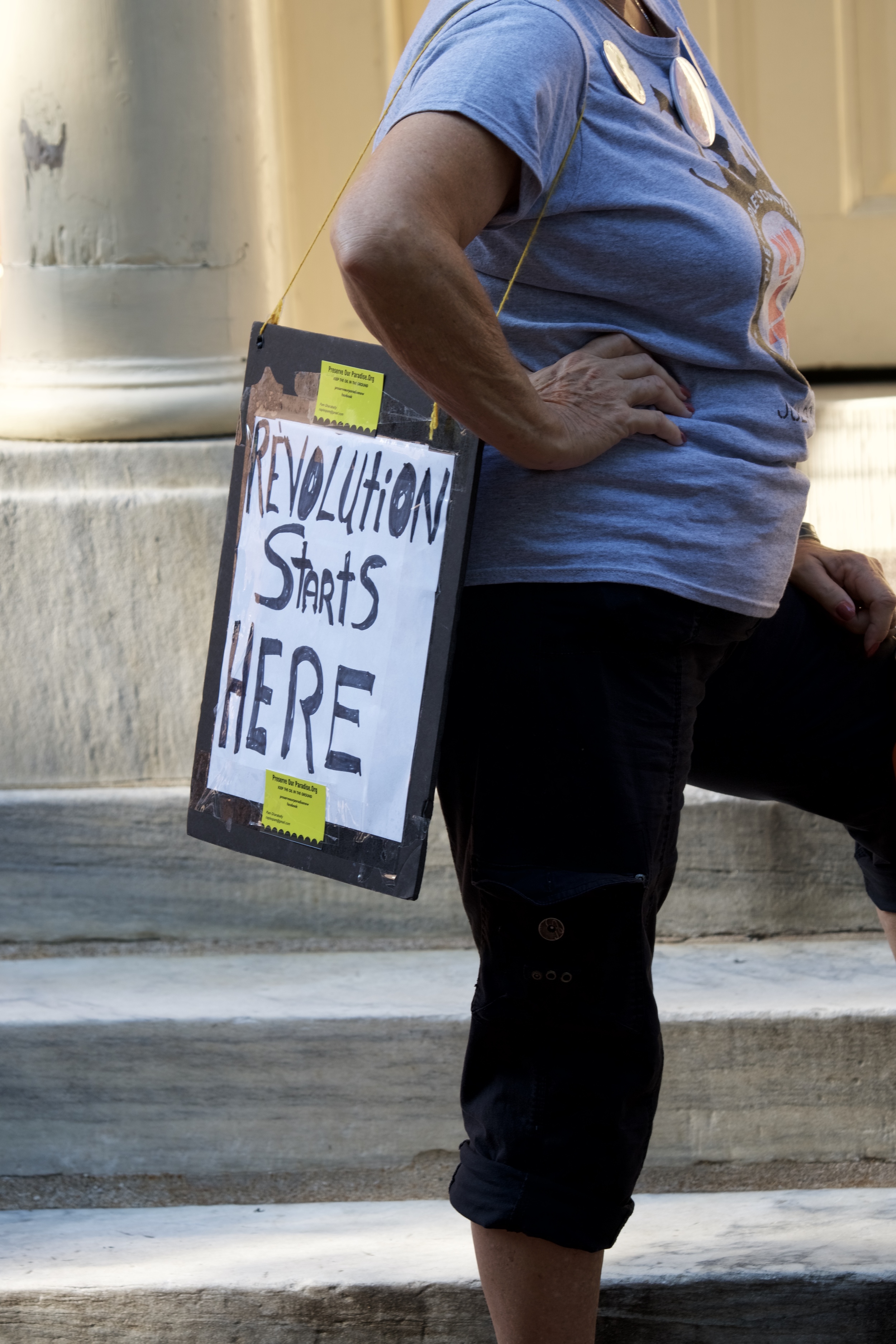












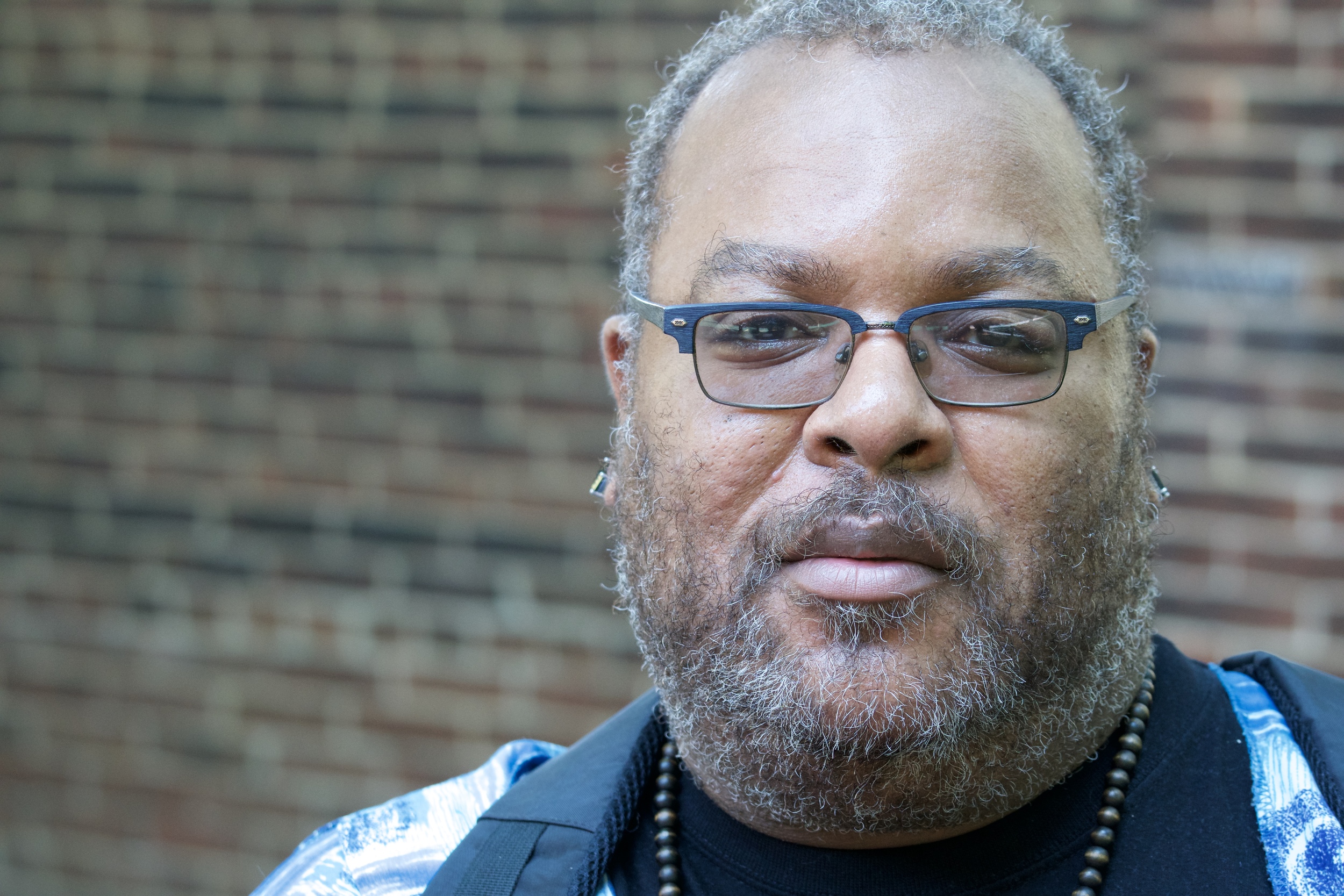
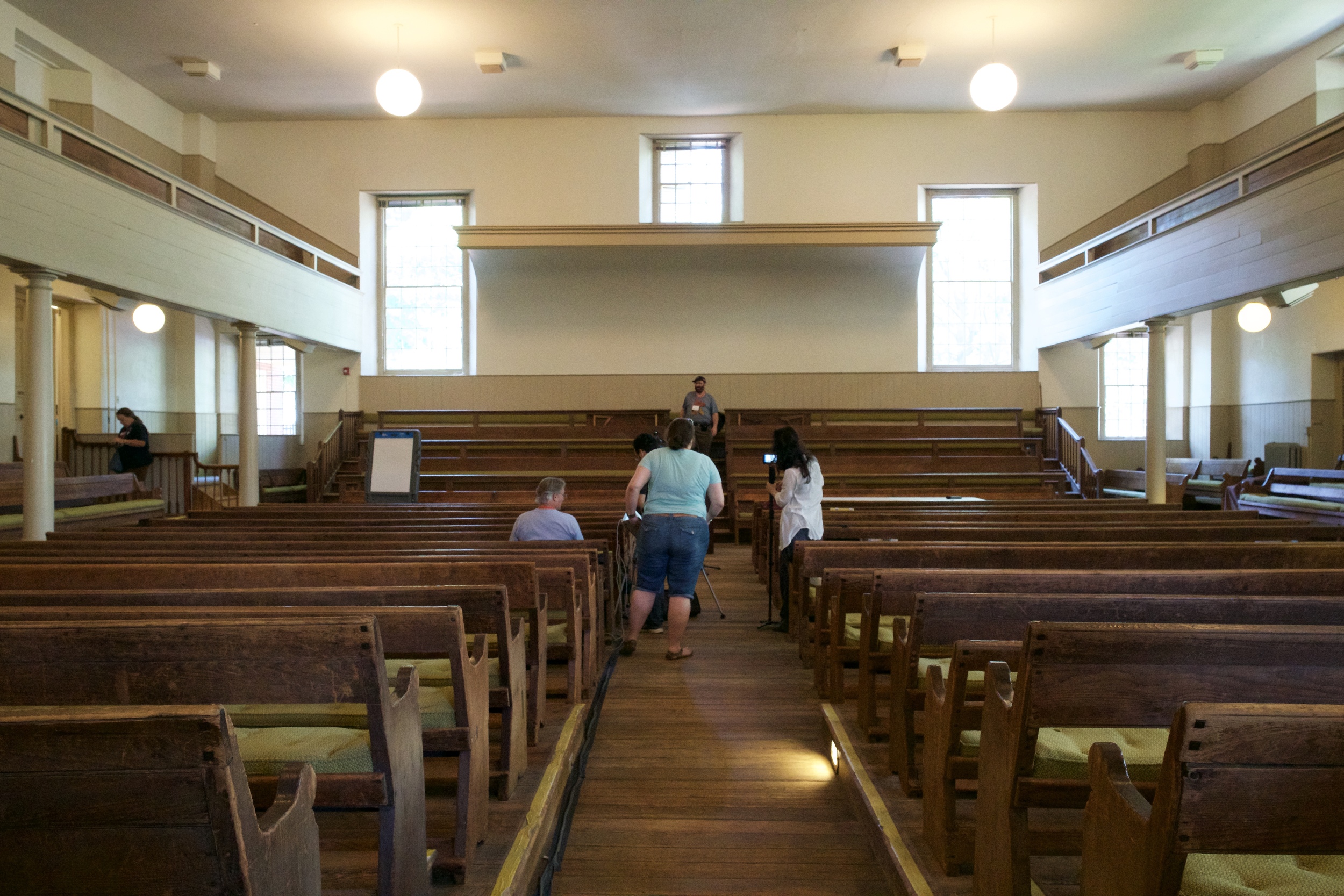
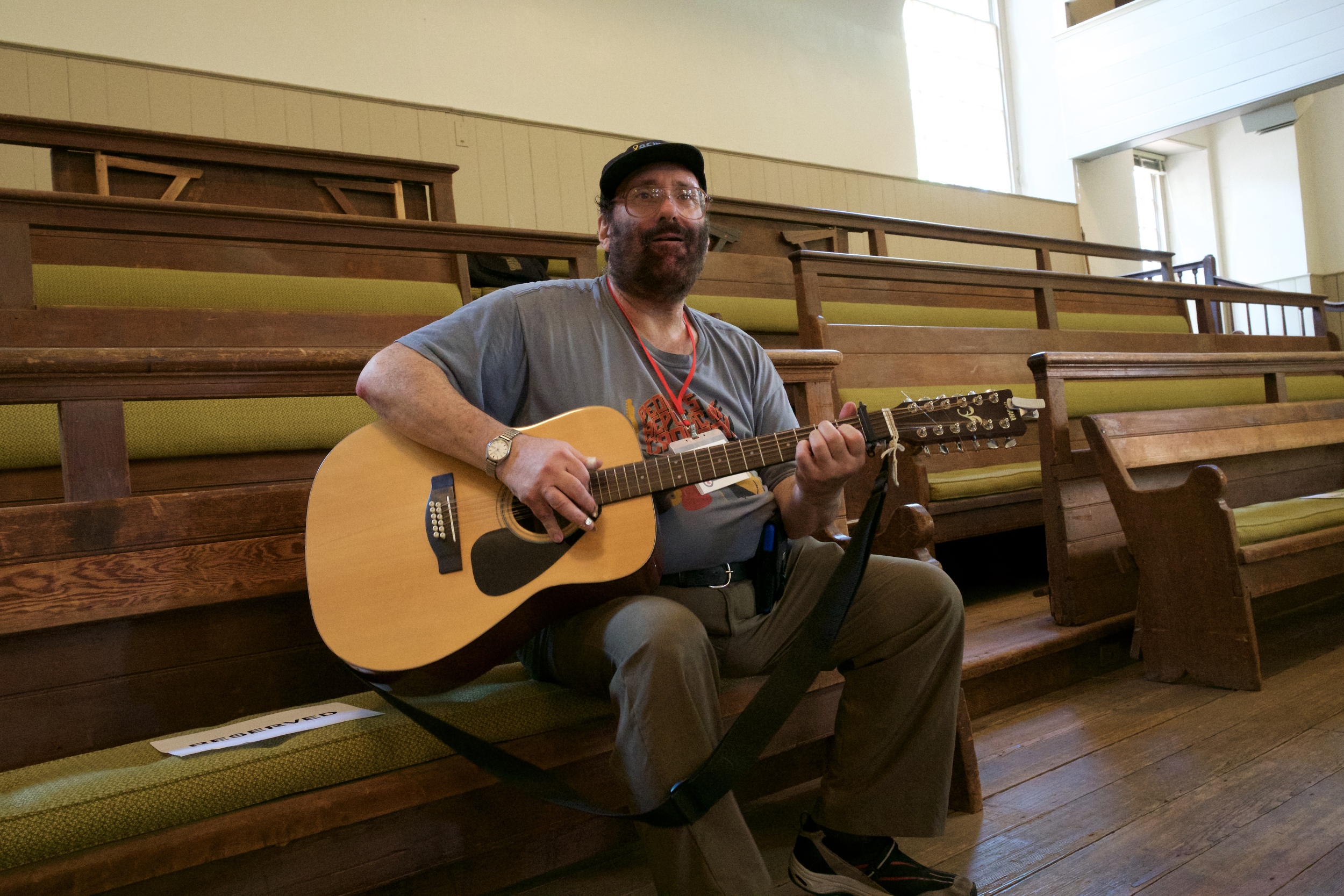
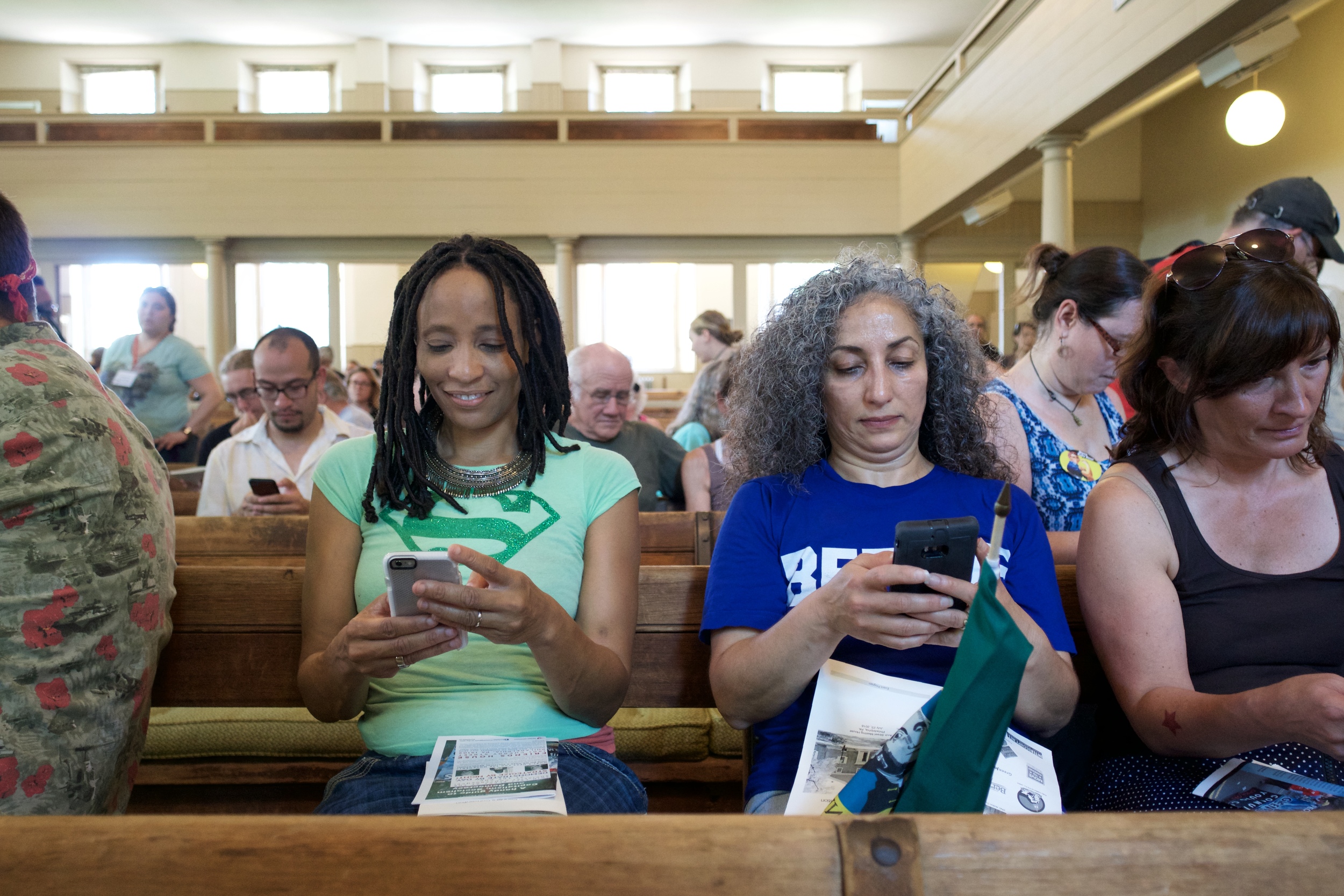


























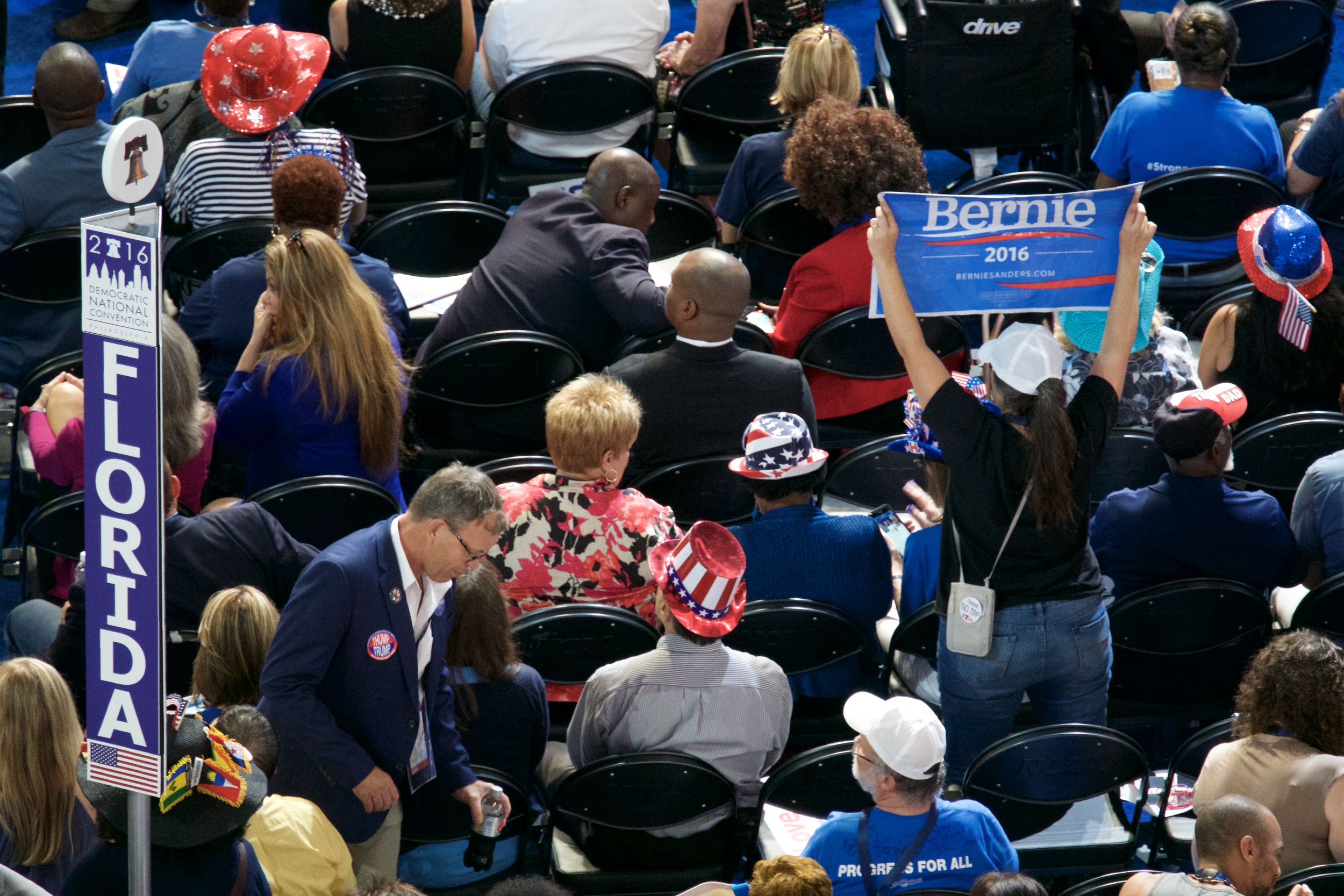














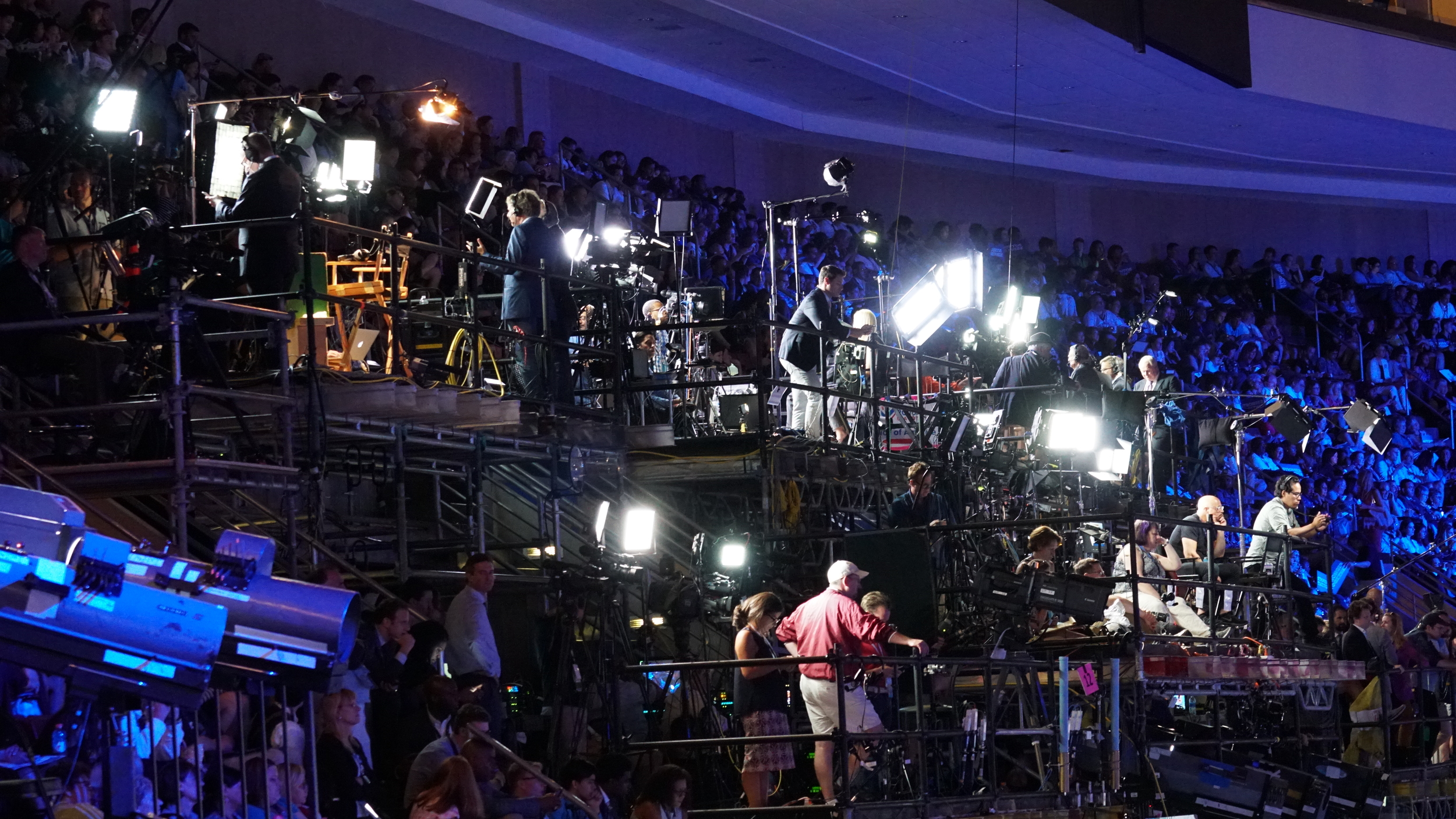











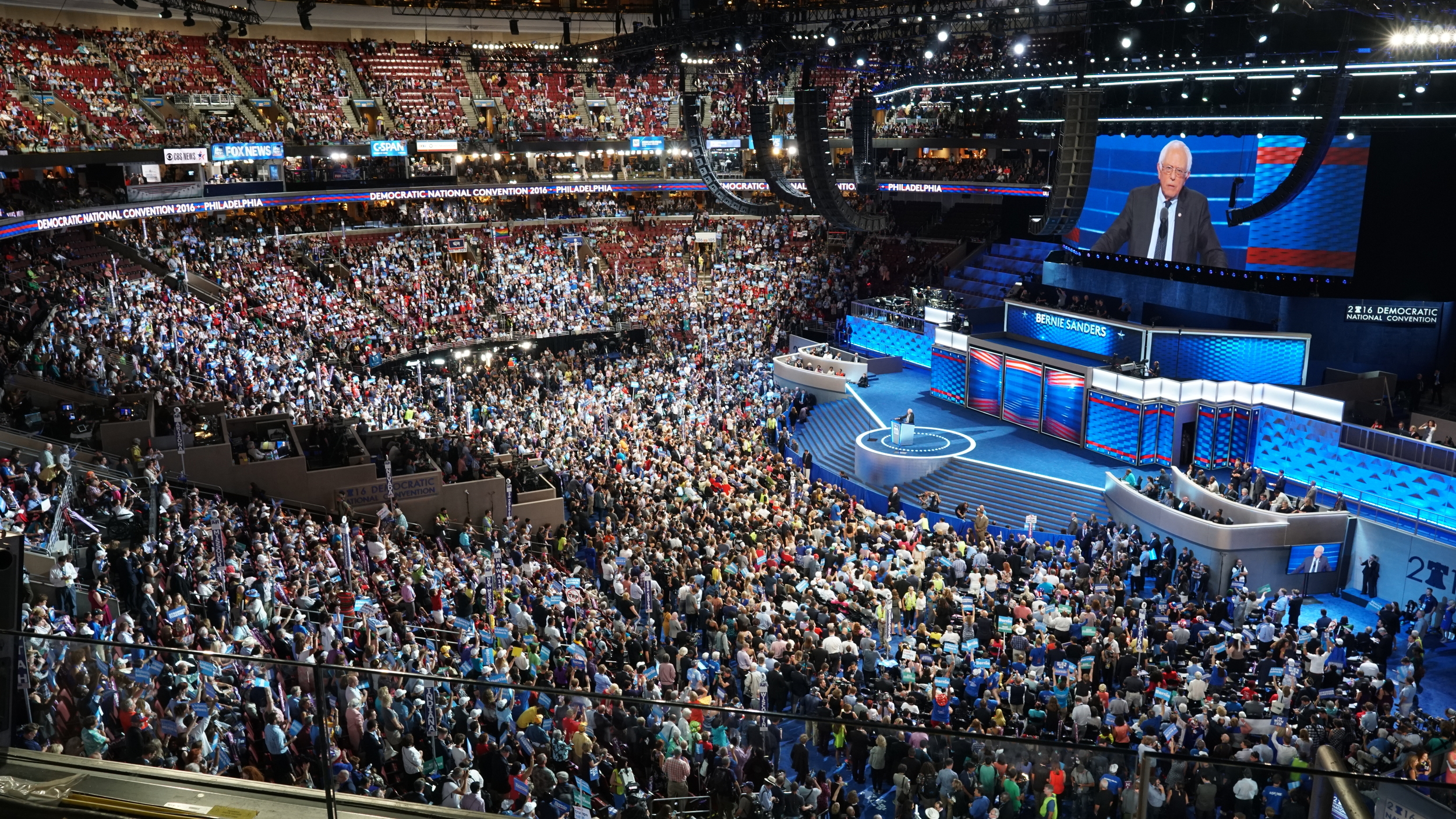


![Sony RX10 III [B&H|Amazon] would give me more optical reach than the 300mm f/2.8, yet at the wide end would go all the way down to a full frame equivalent of 24mm, besting the Batis 18mm on the a6300. I'd used it before and liked the …](https://images.squarespace-cdn.com/content/v1/56265dabe4b09a7e5c7423e2/1470251769467-1MTYYF7NOCR9140XOKY9/image-asset.jpeg)


